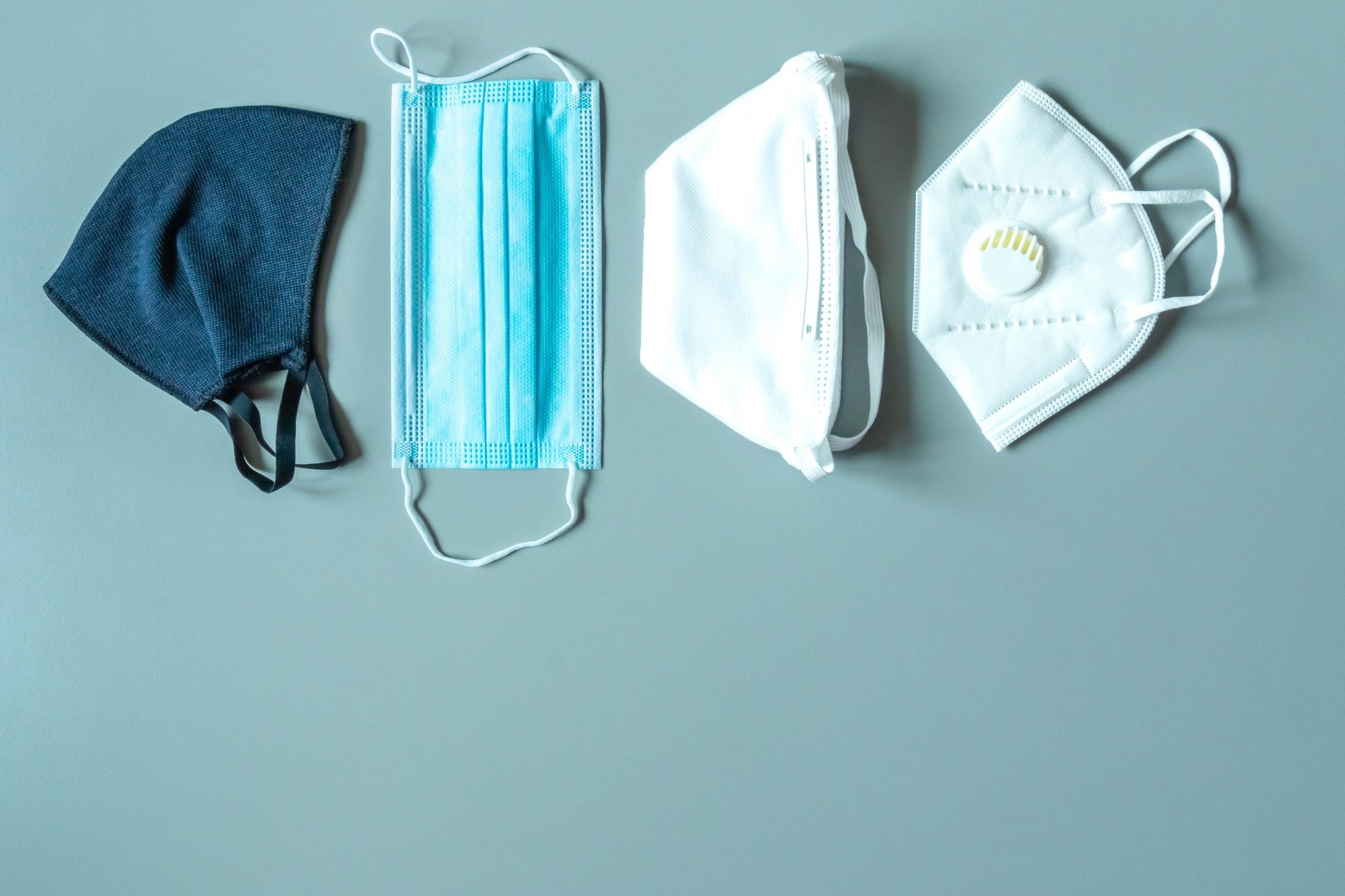In a recent study published in the Journal of Hazardous Materials, researchers investigated the presence of phthalic acid esters (PAEs) or phthalates in commercially available face masks to assess the health risks associated with the increased use of face masks during the coronavirus disease 2019 (COVID-19) pandemic.

Background
One of the strongly recommended COVID-19 mitigation measures was using face masks to limit the airborne transmission of severe acute respiratory syndrome coronavirus 2 (SARS-CoV-2) through aerosolized droplets.
The commonly used facemasks were surgical masks, non-surgical masks, and filtering facepiece respirators (FFP). Surgical or medical masks consist of non-woven fabric layers and are considered medical devices in the European Union (EU). Filtering facepiece respirators consist of four or five layers and are more efficient at cutting down aerosols, dust, and airborne particulate matter such as viruses.
The layers of all these face masks are made using polypropylene, polyester, polycarbonate, polystyrene, or polyethylene, all of which contain hazardous chemicals such as phthalates that are used to improve the flexibility of the material.
Phthalates have been associated with endocrine disruption and potentially carcinogenic effects and are subject to strict regulations. The EU has banned the use of some phthalates in cosmetics, and the use of most PAEs is permitted only with specific authorization. Considering the significant increase in the use of facemasks with the onset of the COVID-19 pandemic, it is essential to determine the risks associated with their prolonged use.
About the study
In the present study, the researchers assessed the concentrations of 11 PAEs in 35 commercially available face masks in Italy using a gas chromatography-mass spectrometry (GC/MS) method developed in this study. The risk assessment based on the GC/MS results included the carcinogenic and non-carcinogenic health implications.
Of the 35 evaluated masks, 31% were FFP2 masks with four or five layers, 63% were three-layer surgical masks, and 6% were non-surgical three-layered masks. The masks included in the study comprised 24 adult masks and 11 masks for children and were made in Italy (54%), China (40%), and Turkey (6%).
The hazard quotient (HQ) was calculated to estimate the non-carcinogenic risk of phthalate exposure, and the hazard index (HI) was used to understand cumulative non-carcinogenic risks. Derived no-effect levels (DNELs) were calculated from no observed adverse effect levels (NOAELs) or lowest observed adverse effect levels (LOAELs). They were correlated to exposure to assess the risk to human health. Risk characterization ratios (RCRs) were used to assess the carcinogenic risks of phthalate exposure, and derived minimal effect levels (DMELs) were calculated.
For a refined exposure assessment, the Arthur D. Little Polymer Migration Estimation Model (AMEM 2.1 model) was used to estimate the fraction of the specific chemical being released from or spread through a polymer.
Results
The results from the GC/MS evaluation indicated that four phthalates — dibutyl phthalate (DBP), bis (2-ethylhexyl) phthalate (DEHP), diisobutyl phthalate (DIBP), and benzyl butyl phthalate (BBP) — were detected in all the face masks that were tested, in concentrations between 23.6 mg/kg and 54.3 mg/kg. The other phthalates were below the limit of detection (LoD) values.
The exposure doses for the four detected phthalates ranged between 6.43 x 10-5 mg/kg body weight/day and 1.43 x 10-2 mg/kg of body weight/day. The contribution of DEHP to the total phthalate exposure values was the highest (74.32%), while that of DIBP was 22.15%, and DBP (2.40%) and BBP (1.12%) had much lower contributions.
The median HI values of phthalate exposures for adults and children were not higher than the tolerable levels and indicated no non-carcinogenic adverse effects. However, for seven of the 35 face masks, the cumulative RCR values for carcinogenic effects were between 9.34 x 10-2 to 1.55 for adults and 1.1 x 10-1 and 5.28, much higher than the 1 x 10-6 tolerable limit.
Conclusions
To summarize, the study evaluated the presence of phthalates in non-woven fabric layers of 35 commercially found face masks and found that four phthalates, DEHP, DIBP, DBP, and BBP, were found in all the face masks at concentrations much above the limit of detection.
While the phthalate exposure values did not indicate the risk of non-carcinogenic detrimental effects, 20% of the face masks showed cumulative RCR values exceeding the tolerable limits for carcinogenic health risks.
Overall, the results indicated that while the potential carcinogenic risks of face masks need to be investigated further, most of the analyzed face masks were considered safe for use.
- Leoni, C., Majorani, C., Cresti, R., Marcello, I., Berardi, E., Fava, L., Attias, L., and D’Ilio, S. (2022). Determination and risk assessment of phthalates in face masks. An Italian study. Journal of Hazardous Materials. doi: https://doi.org/10.1016/j.jhazmat.2022.130176 https://www.sciencedirect.com/science/article/pii/S0304389422019707
Posted in: Medical Science News | Medical Research News | Disease/Infection News
Tags: Chemicals, Children, Chromatography, Coronavirus, Coronavirus Disease COVID-19, Cosmetics, covid-19, Endocrine, Esters, Gas Chromatography, Mass Spectrometry, Medical Devices, Pandemic, Phthalates, Respiratory, SARS, SARS-CoV-2, Severe Acute Respiratory, Severe Acute Respiratory Syndrome, Spectrometry, Syndrome
.jpg)
Written by
Dr. Chinta Sidharthan
Chinta Sidharthan is a writer based in Bangalore, India. Her academic background is in evolutionary biology and genetics, and she has extensive experience in scientific research, teaching, science writing, and herpetology. Chinta holds a Ph.D. in evolutionary biology from the Indian Institute of Science and is passionate about science education, writing, animals, wildlife, and conservation. For her doctoral research, she explored the origins and diversification of blindsnakes in India, as a part of which she did extensive fieldwork in the jungles of southern India. She has received the Canadian Governor General’s bronze medal and Bangalore University gold medal for academic excellence and published her research in high-impact journals.
Source: Read Full Article
